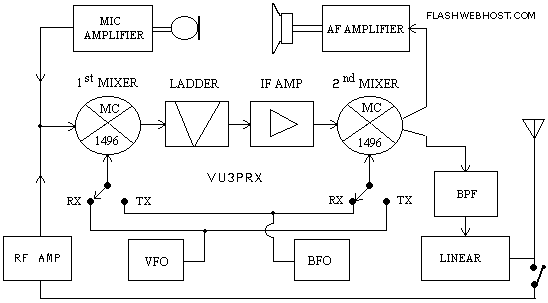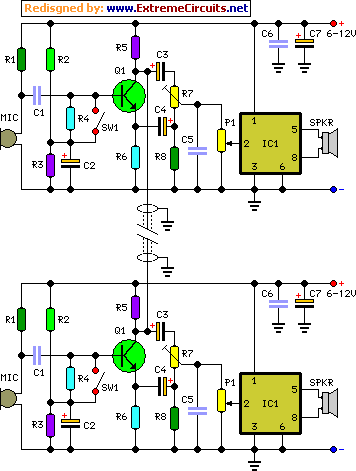
ISL81487 5V Half Duplex 5Mbps RS-485/RS-422 Transceiver

The Intersil RS-485/RS-422 devices are fractional unit load (UL), BiCMOS, 5V powered, single transceivers that comply with both RS-485 and RS-422 standards for balanced communication. This Intersil family is designed for 10% tolerance supplies (4.5V to 5.5V). The ISL81483 and ISL81487 provide a 1/8 unit load to the RS-485 bus, allowing up to 256 transceivers on the network for large node count systems, such as process automation and remote meter reading systems. The 1/4 UL ISL8487 permits up to 128 transceivers on the bus. In a remote utility meter reading system, utility meter readings from individual apartments are transmitted to a concentrator via an RS-485 network, enabling a high node count that reduces the need for repeaters. Data from all meters is accessed from the concentrator through a single access port or a wireless link. The slew rate limited drivers on the ISL8487 and ISL81483 help to reduce electromagnetic interference (EMI) and minimize reflections caused by improperly terminated transmission lines or unterminated stubs in multidrop and multipoint applications. These devices can achieve data rates of up to 250 kbps. The driver (Tx) outputs are protected against short circuits, even for voltages exceeding the power supply voltage. Furthermore, on-chip thermal shutdown circuitry disables the Tx outputs to prevent damage due to excessive power dissipation.
The Intersil RS-485/RS-422 family of transceivers is engineered for robust performance in various communication applications, particularly in environments that demand high reliability and extensive node connectivity. The fractional unit load design allows for efficient utilization of the RS-485 bus, accommodating a significant number of devices without compromising signal integrity. This is particularly beneficial in applications such as industrial automation, where multiple sensors and actuators must communicate over a single bus.
The ability to operate with a power supply tolerance of ±10% enhances the flexibility of these devices in real-world applications, where supply voltages may fluctuate. The ISL81483 and ISL81487 models, with their 1/8 unit load, are particularly suited for systems requiring a high density of transceivers, while the ISL8487's 1/4 unit load option provides a balance of performance and capacity for slightly smaller networks.
In remote utility monitoring systems, the architecture allows for seamless integration of numerous utility meters, which can relay data efficiently to a central concentrator. This centralized approach not only simplifies data collection but also minimizes infrastructure costs by reducing the number of repeaters necessary for effective communication.
The slew rate limiting feature is critical in mitigating EMI, a common challenge in multi-transceiver setups, ensuring that signal integrity is maintained across long distances and through various types of cabling. The capability to achieve data rates up to 250 kbps makes these devices suitable for a wide range of data transmission needs, from simple meter readings to more complex industrial control systems.
Protection features such as short circuit protection on the driver outputs and thermal shutdown capabilities are essential for safeguarding the transceivers against common operational hazards, ensuring longevity and reliability in demanding environments. Overall, the Intersil RS-485/RS-422 transceivers represent a versatile and dependable choice for balanced communication applications across various industries.These Intersil RS-485/RS-422 devices are "fractional" unit load (UL), BiCMOS, 5V powered, single transceivers that meet both the RS-485 and RS-422 standards for balanced communication. Unlike competitive devices, this Intersil family is specified for 10% tolerance supplies (4. 5V to 5. 5V). The ISL81483 and ISL81487 present a 1/8 unit load to the RS -485 bus, which allows up to 256 transceivers on the network for large node count systems (e. g. , process automation, remote meter reading systems). The 1/4 UL ISL8487 allows up to 128 transceivers on the bus. In a remote utility meter reading system, individual (apartments for example) utility meter readings are routed to a concentrator via an RS-485 network, so the high allowed node count minimizes the number of repeaters required to network all the meters. Data for all meters is then read out from the concentrator via a single access port, or a wireless link.
Slew rate limited drivers on the ISL8487 and ISL81483 reduce EMI, and minimize reflections from improperly terminated transmission lines, or unterminated stubs in multidrop and multipoint applications. Data rates up to 250kbps are achievable with these devices. Driver (Tx) outputs are short circuit protected, even for voltages exceeding the power supply voltage.
Additionally, on-chip thermal shutdown circuitry disables the Tx outputs to prevent damage if power dissipation becomes excessive. 🔗 External reference
The Intersil RS-485/RS-422 family of transceivers is engineered for robust performance in various communication applications, particularly in environments that demand high reliability and extensive node connectivity. The fractional unit load design allows for efficient utilization of the RS-485 bus, accommodating a significant number of devices without compromising signal integrity. This is particularly beneficial in applications such as industrial automation, where multiple sensors and actuators must communicate over a single bus.
The ability to operate with a power supply tolerance of ±10% enhances the flexibility of these devices in real-world applications, where supply voltages may fluctuate. The ISL81483 and ISL81487 models, with their 1/8 unit load, are particularly suited for systems requiring a high density of transceivers, while the ISL8487's 1/4 unit load option provides a balance of performance and capacity for slightly smaller networks.
In remote utility monitoring systems, the architecture allows for seamless integration of numerous utility meters, which can relay data efficiently to a central concentrator. This centralized approach not only simplifies data collection but also minimizes infrastructure costs by reducing the number of repeaters necessary for effective communication.
The slew rate limiting feature is critical in mitigating EMI, a common challenge in multi-transceiver setups, ensuring that signal integrity is maintained across long distances and through various types of cabling. The capability to achieve data rates up to 250 kbps makes these devices suitable for a wide range of data transmission needs, from simple meter readings to more complex industrial control systems.
Protection features such as short circuit protection on the driver outputs and thermal shutdown capabilities are essential for safeguarding the transceivers against common operational hazards, ensuring longevity and reliability in demanding environments. Overall, the Intersil RS-485/RS-422 transceivers represent a versatile and dependable choice for balanced communication applications across various industries.These Intersil RS-485/RS-422 devices are "fractional" unit load (UL), BiCMOS, 5V powered, single transceivers that meet both the RS-485 and RS-422 standards for balanced communication. Unlike competitive devices, this Intersil family is specified for 10% tolerance supplies (4. 5V to 5. 5V). The ISL81483 and ISL81487 present a 1/8 unit load to the RS -485 bus, which allows up to 256 transceivers on the network for large node count systems (e. g. , process automation, remote meter reading systems). The 1/4 UL ISL8487 allows up to 128 transceivers on the bus. In a remote utility meter reading system, individual (apartments for example) utility meter readings are routed to a concentrator via an RS-485 network, so the high allowed node count minimizes the number of repeaters required to network all the meters. Data for all meters is then read out from the concentrator via a single access port, or a wireless link.
Slew rate limited drivers on the ISL8487 and ISL81483 reduce EMI, and minimize reflections from improperly terminated transmission lines, or unterminated stubs in multidrop and multipoint applications. Data rates up to 250kbps are achievable with these devices. Driver (Tx) outputs are short circuit protected, even for voltages exceeding the power supply voltage.
Additionally, on-chip thermal shutdown circuitry disables the Tx outputs to prevent damage if power dissipation becomes excessive. 🔗 External reference





